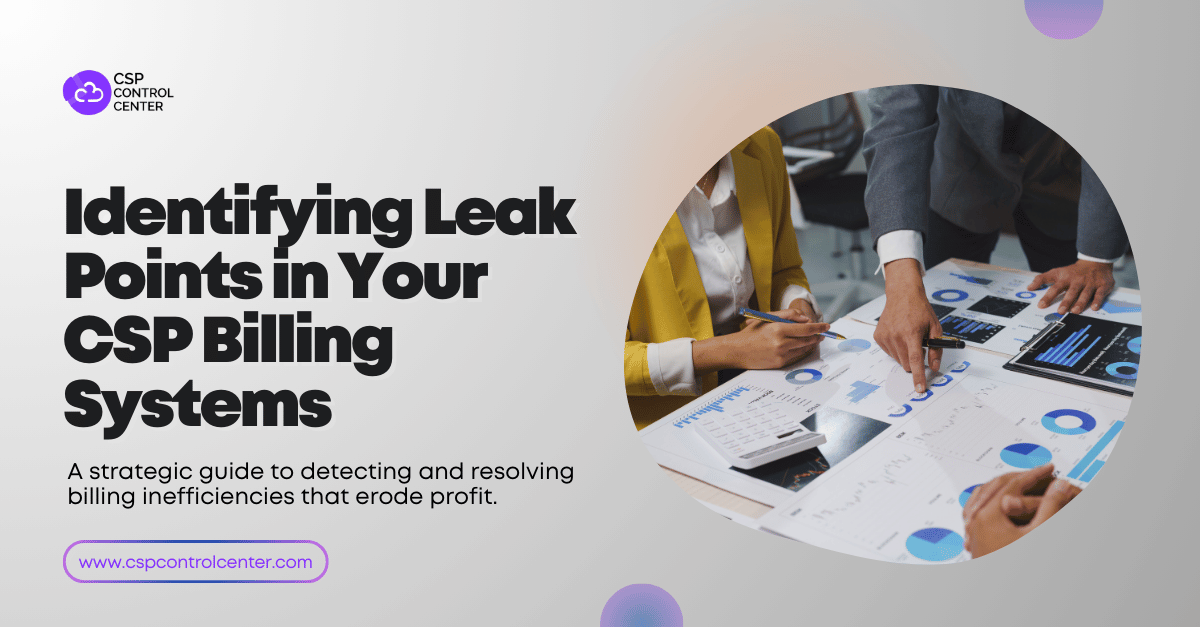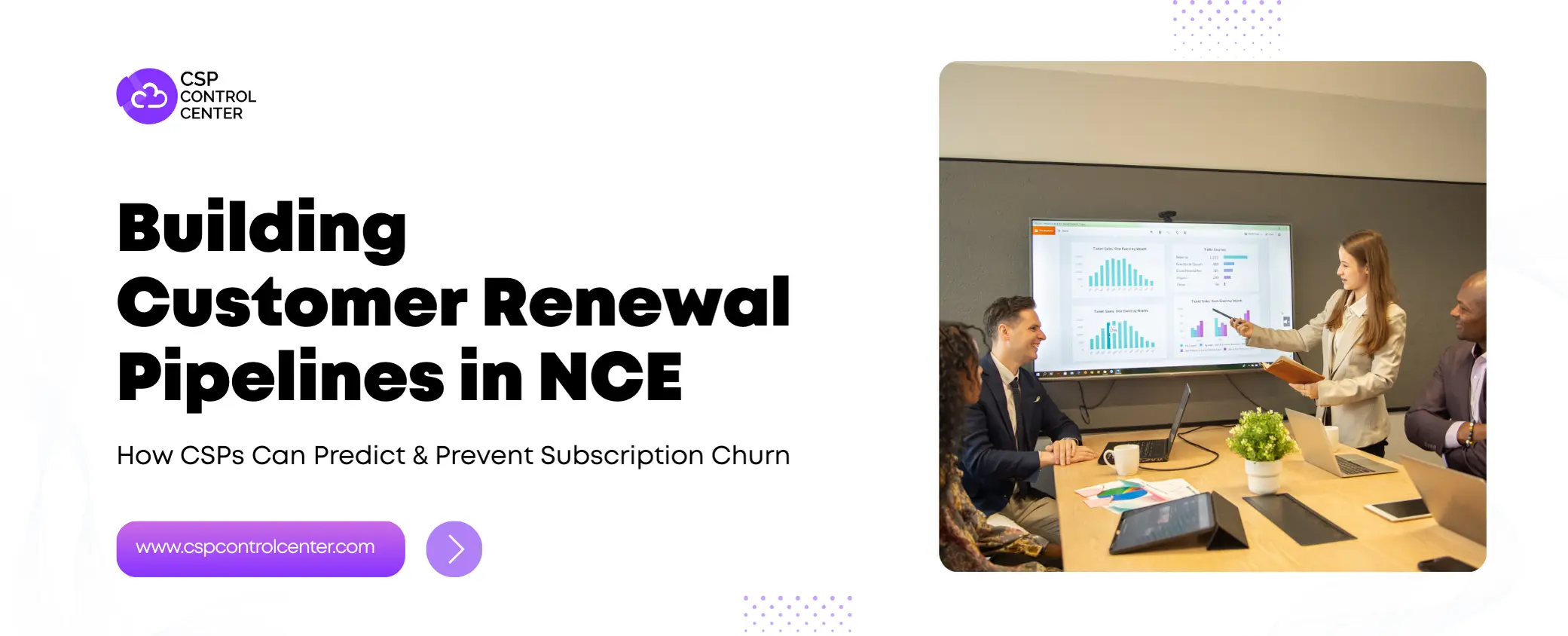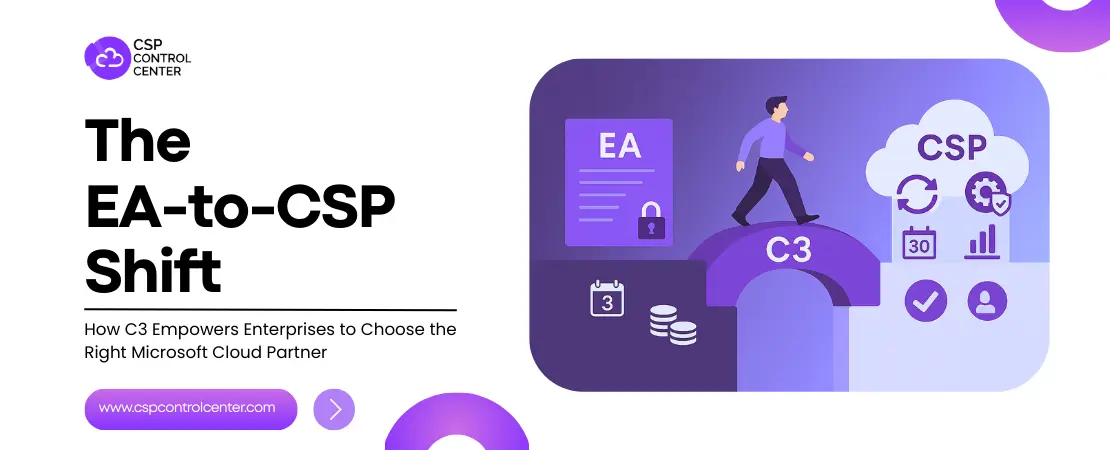In the fast-evolving cloud market, Cloud Solution Providers (CSPs) play a critical role in delivering cloud-based services, infrastructure, and software to businesses worldwide. Despite the growing opportunity, as your CSP business scales, one of the biggest challenges you may face is maintaining an efficient and error-free CSP billing process. As a Microsoft CSP, your revenue does not depend only on sales but on billing accuracy as well. Even minor inefficiencies in the billing process can drain revenue, leading to profit erosion. According to the State of Monetization report by MGI Research, “42% of companies experience revenue leakage.”
Accurate billing helps maintain customer trust, ensures compliance, and optimizes revenue streams. But like most CSPs, you also might struggle with hidden billing leaks caused by manual errors, misconfigurations, and a lack of visibility. These leaks may seem small at first, but they compound over time, leading to substantial financial losses. In this blog, we will explore the common leak points in the CSP billing pipeline, how to detect them, and actionable strategies to plug these gaps. By addressing the billing issues, you can recover lost revenue, boost customer satisfaction, and streamline operations.
Understanding the CSP Billing Pipeline
In order to fix the leaks in the CSP billing pipeline, you first need to understand the different components of the billing pipeline, how revenue flows through it, and the common reasons why vulnerabilities arise.
License Provisioning & Subscription Management
As a Microsoft CSP, you procure licenses or subscriptions from Microsoft and allocate them to end customers. This includes setting start/end dates, usage terms, and service levels.
Usage Tracking
For services billed on consumption (like virtual machines or storage), you must track real-time usage data accurately.
Pricing & Discount Configuration
Standard pricing is adjusted based on customer-specific discounts, volume tiers, promotions, or margin settings.
Invoice Generation
Bills are generated based on contracts, subscriptions, or pay-as-you-go models.
Payment Collection & Reconciliation
After invoices are delivered, you need to collect payments and reconcile them. Any discrepancies, such as overbilling or undercharging, should be resolved at the earliest.
Reporting & Compliance
You need to maintain accurate billing reports for internal auditing, Microsoft partner compliance, and customer transparency.
Common Revenue Streams for CSPs
As a Microsoft CSP, you have the opportunity to generate revenue through multiple channels.
Subscription Licenses
You can resell recurring licenses for popular SaaS products such as Microsoft Office 365, Dynamics 365, etc. These are typically billed on a monthly or annual basis per user or seat and help you earn a steady, recurring income.
Usage-Based Cloud Services (Pay-as-You-Go)
These services are billed based on actual consumption, like virtual machines, storage, networking, and databases. As the billing is dependent on the usage, you need to ensure accurate metering and real-time tracking.
Professional Services
You can offer consulting, onboarding, migration, or implementation services as a one-time service.
Managed Services
You can provide management of a customer’s IT environment. This can cover areas like cloud infrastructure, cybersecurity, backup and disaster recovery, compliance, and performance optimization. These services are generally billed monthly and provide steady, high-margin recurring revenue.
Third-Party SaaS Resale
You can also resell additional SaaS applications from other vendors. These could include CRM platforms, collaboration tools, security solutions, or industry-specific software. These provide value addition for the customers and recurring commissions for you.
Why Billing Leaks Happen
Cloud billing is dynamic, recurring, and quite different from traditional product sales, which are one-time. This makes cloud billing complex and creates multiple points where revenue leaks can happen. Here are some of the most common reasons why CSP billing leaks occur:
Disconnected Tools and Systems
You might be using different business tools to run your Microsoft CSP business. These can include CRM tools, PSA tools, accounting software, billing tools, etc. Without proper integration between these systems, critical data can be lost, leading to missed charges, duplicated billing, or license mismatches.
Manual Invoice Handling
When you rely on spreadsheets or manually prepared invoices, it increases the risk of human error. These methods may seem manageable for a small number of customers, but as your client base scales, so does the complexity. With a manual billing system, you might forget to bill for a new subscription or apply incorrect pricing or discounts on existing subscriptions. When this happens with multiple customer accounts, it not only erodes trust but also contributes to significant revenue leakage. Apart from this, in a fast-paced cloud environment, reliance on manual workflows creates inefficiencies that you cannot afford.
Lack of Real-Time Data
If you don’t have up-to-date information about how much cloud service your customers are using, billing becomes difficult. Without access to real-time data, you might miss billing for some services or charge incorrect amounts. It also becomes harder to spot unusual usage patterns, expired licenses, or unauthorized consumption.
Complex and Custom Pricing Models
To attract and retain customers, you might offer custom pricing, bundled packages, or tiered discounts. Though these help in getting business, managing the varying pricing structures can be difficult. Without an automated billing system, you might apply the wrong pricing or forget to update contract terms, resulting in undercharging or billing disputes.
Payment Collection Gaps
Delays in sending invoices, inconsistent follow-up, and billing discrepancies increase the risk of payment delays or defaults. If customers receive incorrect or unclear invoices, they may delay payment or raise disputes that take time to resolve. This impacts cash flow and forces you to spend time and resources chasing payments.
Common Leak Points in the CSP Billing Systems
The complexity of Microsoft CSP billing creates numerous opportunities for revenue leakage. Constantly evolving services, usage-based models, and complex subscription structures make it challenging to track consumption accurately, apply the correct pricing, and reconcile billing data across systems. Understanding the leak points is the first step towards safeguarding your profits. Let’s examine the seven most common leak points in CSP billing operations
Subscription & License Mismanagement
One of the most common sources of revenue leakage is poor license tracking. As the businesses of your customers grow and evolve, they often add, remove, or modify licenses and services. Leaks in the CSP billing can occur when renewals got untracked, licenses are incorrectly allocated, or unused licenses remain active without billing. For example, a customer might continue accessing a service post-subscription due to oversight. Similarly, mid-cycle upgrades or increases in license numbers may not be billed accurately, leading to lost revenue and billing discrepancies.
Inaccurate Usage Metering
For services with consumption-based charges, e.g., cloud compute, accurate usage metering is vital. It ensures that you bill customers on actual consumption. API sync issues, integration gaps, or outdated tracking tools can lead to delayed or incomplete metering data. Without access to real-time usage data, you might underbill your customers, resulting in revenue loss or overbilling them, triggering billing disputes.
Misapplied Pricing and Discounts
Misapplying pricing or discounts can be a costly leak. Custom pricing, volume discounts, promotional rates, and bundled offers can contribute to significant revenue leakage when misapplied. Your sales team might offer discounts that are not properly recorded, or finance teams might fail to apply contractual price increases after anniversary dates. Outdated pricing tiers or promotional pricing might remain active long after the intended expiration date.
Billing Errors & Reconciliation Gaps
Even if your metering is accurate and your pricing is correct, mistakes can still occur during invoice generation and reconciliation. These may include incorrect tax calculations, misapplication of proration rules for mid-cycle changes, or simple arithmetic errors on the invoice. Such mistakes not only impact your revenue but can also damage customer relationships and credibility.
Additionally, accurate reconciliation between what you’re billed by Microsoft and what you charge your customers is essential. Microsoft generates detailed usage and license reports that may vary monthly based on customer activity, pricing updates, or changes in service availability. If you’re not consistently reconciling your customer invoices with data from Microsoft’s Partner Center, there is a high risk of absorbing costs that should have been passed through.
Payment Collection Failures
Generating and sending invoices does not ensure timely payments. Payment collection can fail due to declined transactions, limited payment options, failure to update credit card details, or ineffective follow-up on overdue invoices. Apart from these, when invoices are unclear, sent late, or include errors, customers are more likely to delay payments or raise billing disputes. This disrupts cash flow and increases the time your finance team spends on follow-ups and corrections. Customers may also become frustrated if payment issues are not handled promptly, risking churn.
Lack of Visibility and Controls
A lack of centralized visibility and controls leads to billing issues. Without real-time dashboards or audit trails, errors in metering, pricing, or invoicing go undetected. Weak controls also make it harder to enforce pricing policies or detect fraud, such as unauthorized discounts. This results in a reactive billing process where problems are discovered only after they’ve already caused financial loss. This lack of oversight means small mistakes often go unnoticed and can turn into bigger problems over time.
Identify & Resolve Leaks in CSP Billing Systems
As a Microsoft CSP, the billing pipeline is critical for managing subscriptions, licenses, and usage-based services like Azure. However, billing inefficiencies can lead to revenue leaks, loss of profit, and strained customer relations. Identifying these leaks requires targeted strategies tailored to the Microsoft CSP ecosystem. Below are some strategies that can help identify billing leaks in your CSP billing pipeline.
Conduct a Billing Audit
Start by conducting a detailed internal audit of your CSP billing pipeline. Map the entire process, from subscription provisioning to invoicing and payment collection. Review customer invoices, license allocations, and Azure usage reports to identify discrepancies between what was provisioned, what was used, and what was actually billed. By using a CSP billing automation tool, you can simplify audits by generating comprehensive reports from Microsoft Partner Center data and comparing them to your internal billing records. This reduces manual workload and helps identify mismatches.
Automate Usage & Billing Monitoring
Manual tracking is prone to human error and becomes unsustainable as your customer base grows. Automating usage and billing monitoring with a CSP billing automation tool prevents leaks by catching errors in real-time CSP billing automation tools can connect directly with Microsoft Partner Center APIs to track Azure usage, license assignments, and pricing updates automatically. For instance, automation can alert you if a customer’s Azure storage usage spikes without corresponding charges. By reducing manual oversight, automation ensures scalability and consistency, enabling you to manage a large customer base while minimizing revenue loss.
Use Real-Time Monitoring Tools
Real-time monitoring tools provide instant visibility into billing performance. Real-time insights are services where consumption varies month to month. Use a billing platform with real-time dashboards to monitor each customer’s usage, forecast potential spikes, and catch anomalies early. These insights allow you to resolve issues quickly, protecting revenue and maintaining customer trust.
Incorporate Customer Feedback
Customer feedback can reveal billing issues that internal systems might miss. Offer your customers access to a self-service portal where they can view usage reports, billing history, and invoice breakdowns. Use a billing automation tool to analyze support tickets, look for patterns to see which services have frequent complaints. Also, proactively gather customer feedback through post-billing surveys. This increases transparency, trust, and also helps create a layer of error detection.
Reconcile with Microsoft Partner Center Reports Monthly
Microsoft provides detailed monthly usage and license reports via Partner Center. When you reconcile these reports monthly, it ensures accuracy. Use a CSP billing automation tool to compare Partner Center data with internal invoices. Discrepancies, such as unbilled Azure resources or mismatched license counts, indicate leaks. Regular reconciliation prevents revenue loss and ensures compliance with Microsoft’s billing requirements.
Standardize and Document All Discounts
You might be offering custom pricing or discounts to your customers, especially with bundled services or long-term contracts. An inconsistent discount application is a common leak point. Standardize and document all Microsoft CSP discounts, including promotional offers. Use a CSP billing automation tool to define and apply discount policies across customers and services. This helps ensure discounts are time-bound, documented, and automatically reflected in invoices. Standardization eliminates revenue leakage and reduces customer confusion.
Utilize Predictive Analytics for Proactive Leak Detection
Predictive analytics, available in advanced CSP billing automation tools, forecasts potential leaks by analyzing historical billing data. This can help forecast usage spikes and help you make preemptive billing adjustments. Predictive analytics can also help you forecast revenue leakage risks, which gives you a chance to take action before losses increase.
Analyze Payment Trends & Collection Gaps
Just sending out correct invoices will not stop revenue leakage entirely. You also have to ensure that the payments are collected in a timely manner. Regularly analyze payment timelines, customer credit risks, and outstanding balances. A CSP billing tool can help with payment tracking and initiate automatic dunning processes to recover dues faster and reduce defaults. Additionally, when you track collection patterns, you can identify accounts that consistently pay late and adjust your credit policies accordingly.
Train Your Team on CSP Billing Workflows
Even if you have the best tools to detect and fix billing leaks, a well-trained team is crucial for leak detection. Ensure your sales, operations, finance, and support teams receive regular training on the latest Microsoft billing rules, NCE policies, Azure cost management principles, and Partner Center functionalities. Apart from this, also train your team to effectively use your CSP billing automation tool. A well-informed team makes fewer billing mistakes and it is quicker to identify potential leaks.
Best Practices to Prevent Future Revenue Leaks
Identifying and resolving leaks in the CSP billing pipeline is only half of the challenge; you also need to ensure that these leaks do not return. As products, pricing, billing models, etc., evolve, prevention is not a one-time fix. Below are some steps you can implement to stop future leaks before they start.
Implement End-to-End Billing Automation
Use a CSP billing automation tool to streamline the entire lifecycle from license provisioning and usage tracking to invoicing and payment reminders. Automating the billing pipeline eliminates manual errors and enhances efficiency.
Enhance System Integration for Seamless Data Flow
When tools like CRM, PSA tools, accounting software, ticketing software operate in silos, there are chances of revenue leaks. Ensure seamless integration between Microsoft Partner Center, PSA tools, billing platforms, and payment gateways. This eliminates duplication, missed charges, and inconsistencies between service delivery and billing. Read our blog to learn How integrations can take Microsoft CSP billing automation to the next level..
Hold Monthly Billing & Revenue Reviews
Schedule regular cross-functional reviews with finance, operations, and support teams to analyze billing performance. These meetings should cover assessing invoice accuracy, Azure billing errors, and payment collection rates, amongst others. These reviews help identify trends and prevent recurring revenue leaks.
Regularly Review and Optimize Billing Workflows
As your CSP business evolves, so should your billing processes. Review and refine your workflows regularly, look for inefficiencies, and identify areas where improvement is possible. Use historical data and audit logs to identify bottlenecks or repetitive errors.
Monitor Microsoft Policy Updates
Microsoft frequently updates its CSP program terms, pricing, and licensing rules. Subscribe to Microsoft Partner Network updates, monitor Partner Center announcements, review New Commerce Experience (NCE) changes, and update your billing configurations promptly to stay compliant and avoid revenue losses.
Ready to Take Control of Your CSP Billing?
Stop revenue leaks before they happen with C3 – CSP Control Center. C3 automates your Microsoft CSP billing, ensuring accuracy and compliance. Don’t let billing leaks drain your profits. With C3, you can;
- Automate invoicing and reconciliation
- Get real-time visibility into usage and license data
- Seamlessly integrate with Microsoft Partner Center
- Reduce manual errors and protect your margins
Book a demo today and take control of your CSP revenue.

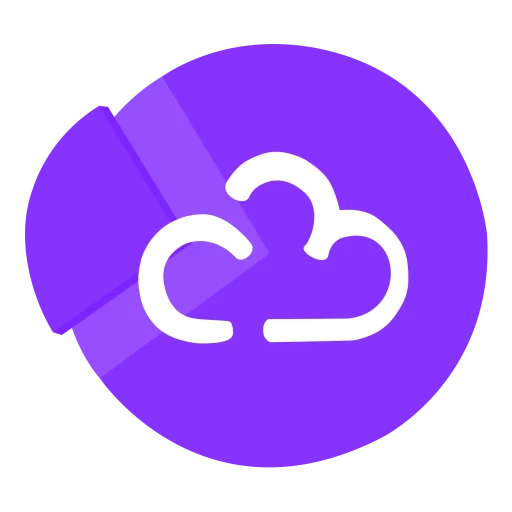 CSP Control Center
CSP Control Center
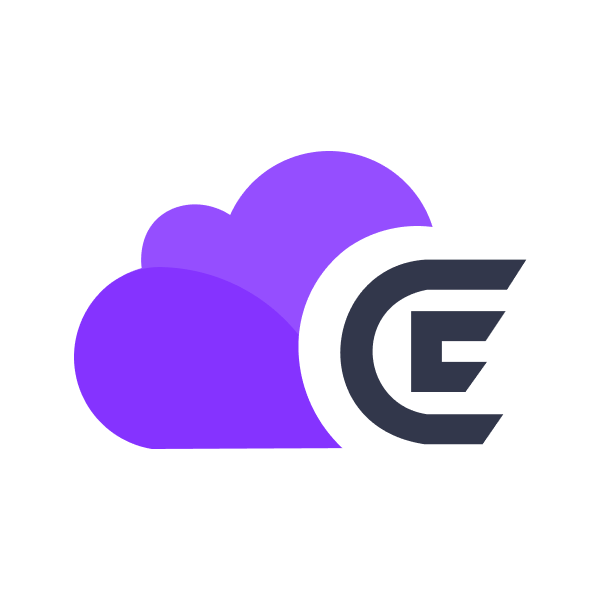 CloudEvents
CloudEvents
